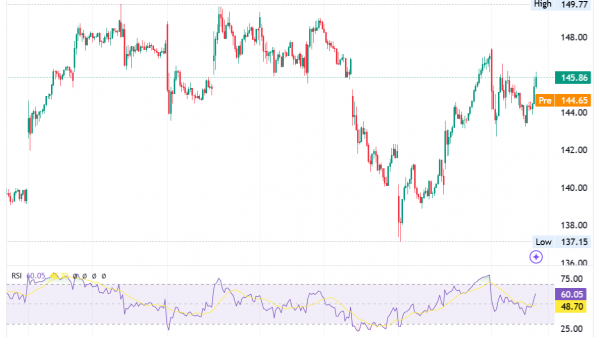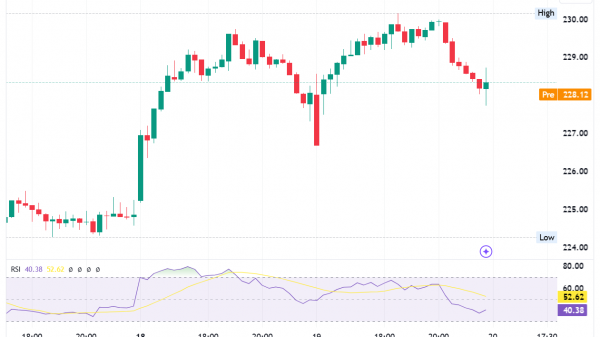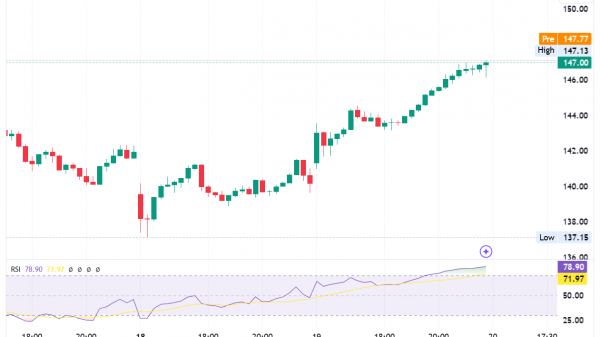Stoch RSI Indicator – Trading Strategy and Tips
The stoch RSI (Relative Strength Index) is a technical analysis indicator used to identify whether an asset is overbought or oversold, thus helping traders make more informed decisions. It combines the principles of the Stochastic Oscillator and the Relative Strength Index (RSI), two of the most widely used indicators in trading.
Understanding Stochastic RSI
Relative Strength Index (RSI): The RSI is a momentum oscillator that measures the speed and change of price movements. It oscillates between zero and 100 and is typically used to identify overbought or oversold conditions in a trading instrument.
Stochastic oscillator: This is another momentum indicator, that compares a particular closing price of a security to a range of its prices over a certain period. It also oscillates between zero and 100.
Stochastic RSI formula: The Stochastic RSI is derived by applying the Stochastic Oscillator formula to the RSI values instead of price values. This means it measures the level of the RSI relative to its high-low range over a set period.
Interpretation: The Stochastic RSI ranges between 0 and 1 (or 0 and 100 in some representations). A reading above 0.8 usually signals that the asset is overbought, while a reading below 0.2 indicates that it is oversold.
Trading strategy using Stochastic RSI
Identify overbought and oversold conditions:
Overbought: When the Stochastic RSI is above 0.8, the market is considered overbought. Traders might expect a pullback or reversal in price.
Oversold: Conversely, when it is below 0.2, the market is oversold, potentially leading to a price rally.
Crossovers: Traders often look for crossovers, where the K-line (the actual value of the stoch RSI) crosses above the D-line (the 3-period moving average of the K-line) to signal a buying opportunity and vice versa for a sell signal.
Divergences: Divergence occurs when the price of an asset is moving in the opposite direction of the Stochastic RSI. A bullish divergence is when the price is making new lows, but the Stochastic RSI is not. This can indicate a potential reversal to the upside. The opposite is true for a bearish divergence.
Trend confirmation: The Stochastic RSI can be used to confirm trends. In a strong uptrend, the Stochastic RSI tends to stay in the overbought area longer, and in a downtrend, it remains in the oversold area.
Useful tips and considerations
It’s beneficial to use the Stochastic RSI in conjunction with other technical indicators or chart patterns. For example, using it with moving averages or support and resistance levels can provide a more comprehensive market analysis.
Adjust settings:
The default setting for the Stochastic RSI is generally a 14-period time frame, but traders can adjust this to suit their trading style. Short-term traders might use a shorter period, while long-term traders might prefer a longer one.
Be aware of false signals:
Like all technical indicators, the Stochastic RSI is not foolproof and can produce false signals. This is particularly true in sideways or ranging markets where overbought and oversold conditions don’t necessarily lead to price reversals.
MACD and Stoch RSI
The Moving Average Convergence Divergence (MACD) and Stochastic RSI are both popular technical analysis indicators used by traders and investors to evaluate market trends and momentum. Understanding these tools is crucial for making informed trading decisions in various financial markets, including stocks, forex, and commodities.
As a reminder, the MACD is a trend-following momentum indicator that shows the relationship between two moving averages of a security’s price. Typically, it is calculated by subtracting the 26-period Exponential Moving Average (EMA) from the 12-period EMA. The result of this calculation is the MACD line.
A nine-day EMA of the MACD, called the “signal line,” is then plotted on top of the MACD line, which can function as a trigger for buy and sell signals. Interestingly, traders may buy the security when the MACD crosses above its signal line and sell – or short – the security when the MACD crosses below the signal line.
MACD indicators are also used to identify bullish or bearish divergences that warn of potential reversals in the market. A bullish divergence occurs when the MACD forms two rising lows that correspond with two falling lows on the price. A bearish divergence is the opposite, with the MACD forming two falling highs that correspond with two rising highs on the price.
Both the MACD and the Stochastic RSI are valuable tools in a trader’s arsenal. They can be used together to confirm trends and signals.
Consider the market context
The effectiveness of the Stochastic RSI can vary depending on the market conditions. It tends to work best in trending markets and less so in choppy, sideways markets.
Risk management:
Always use proper risk management strategies. This includes setting stop-loss orders to limit potential losses and taking profits at predetermined levels.
Practice and experience:
Before implementing the Stochastic RSI in live trading, practice with it in a demo account. Experience is crucial in understanding how this indicator works in different market conditions.
Economic Indicators and News:
Be aware of economic indicators and news releases, as they can have a significant impact on market conditions, often overriding technical signals.
Technical analysis knowledge:
A solid understanding of technical analysis is essential when using the Stochastic RSI. Familiarize yourself with chart patterns, volume analysis, and other relevant concepts.
Backtesting:
Test your Stochastic RSI-based strategies through backtesting. This involves applying your strategy to historical data to see how it would have performed, which can help refine your approach.
Market specifics:
The Stochastic RSI might behave differently across various markets (like stocks, forex, or cryptocurrencies). Understand the specifics of the market you are trading in.
In conclusion, the Stochastic RSI is a powerful tool that, when used correctly, can enhance a trader’s ability to make informed decisions
However, it’s important to remember that no indicator is perfect, and the Stochastic RSI should be used as part of a broader trading strategy, always considering market conditions and risk management. Continuous learning and adaptation are key components of successful trading.
The post Stoch RSI Indicator – Trading Strategy and Tips appeared first on FinanceBrokerage.

































